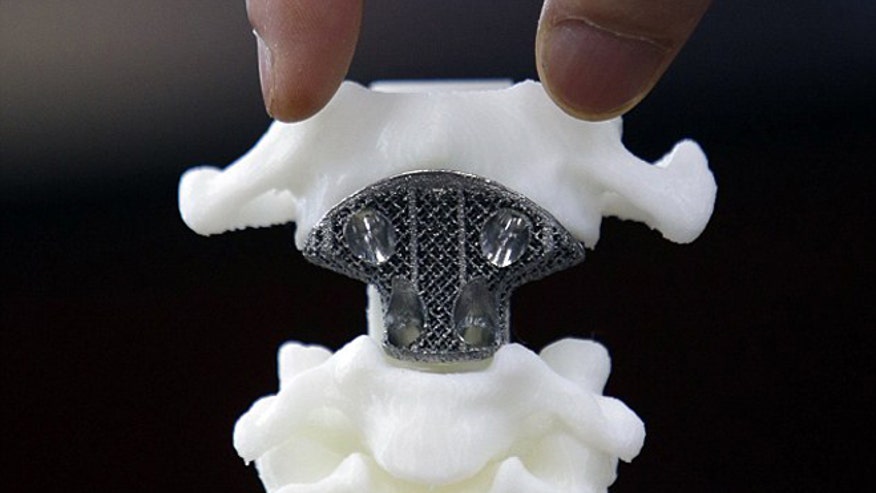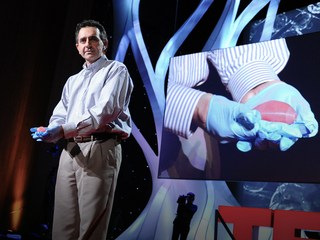How might we preserve the human body in the future?


My best friend Josh M. suffers from spastic cerebral palsy. “This form of the condition causes muscles to stiffen, which makes movement difficult” (Cerebral Palsy). Josh used to wear braces on his legs, he eventually decided to take them off after years of pain, not only in his legs and back, but the mental pain from other children bullying of him. My best friend honestly believes that he will be in a wheelchair before the age of 50 because of the effects on his body from his condition and every day with work and life. I was telling Josh about my class and how I was working with 3-D printers and how we can almost print anything, about how people are already using it to print functioning human organs, when he interrupted me. He said “Dude, print me a spine.” I said “that’s it, that’s what I’m going to do. I am going to print you a spine.” Knowing that I can’t currently print my friend a functioning spine, my idea is to build some type of 3-D replica of a section of spine suffering from spastic cerebral palsy, and then some kind of replica of a spine fixed with 3d printed parts.
Humans have been trying to preserve the human body for thousands of years, from mummification in Egypt to modern day western medicine. For the ancient Egyptians it was part of their religion to preserve the body in death (Encyclopedia Smithsonian: Egyptian Mummies). For most modern-day humans however, we are trying to preserve the body in life. We are trying to preserve our bodies in order to live longer, happier, and more productive lives. I believe that using the 3-D printing technology in the medical field in order to preserve our bodies in life is one of the most important uses of this technology.
3D printing technology in the medical field has already changed lives and is currently changing lives today. As I was telling Josh before he interrupted me, there are already people out there living with 3D printed organs. During my research for this project and course I happened upon a video involving this use of 3D printing for medical purposes. The video was a TEDtalk by Anthony Atala. Atala and his of professionals work in the field of research pertaining to organ transplants and the culture of the different necessary cells in the human body. In the video after a brief coverage of the other progress made in the field the lead up to his work (such as discovering how to grow cells in a petri dish) Atala begins discussing his work with printing. One thing that was particularly interesting to me was when he discussed how he first started printing tissues. The printer they were using was a modified “desktop inkjet printer”. They had reworked this regular printer so that instead of ink it printed layers with cells of different tissues. With this technique Atala and his team were able to print out a needed piece of bone and have it implanted. They have also done work with soft tissue organs. An example of a life that has already been changed by this aspect of 3D technology is that of Luke Massella. Luke Massella received a 3D printed kidney when he was a child.
“I was really sick. I could barely get out of bed. I was missing school. It was pretty much miserable. I couldn’t go out and play basketball at recess without feeling like I was going to pass out when I got back inside. I felt so sick. I was facing basically a lifetime of dialysis,and I don’t even like to think about what my life would be like if I was on that. So after the surgery, life got a lot better for me. I was able to do more things. I was able to wrestle in high school. I became the captain of the team, and that was great. I was able to be a normal kid with my friends. And because they used my own cells to build this bladder, it’s going to be with me. I’ve got it for life, so I’m all set” (Transcript of “Printing a human kidney”).
Luke Massella life is already changed for the better. Atala is not the only one working in this interesting subject. Doctors in China have begun to use this technology for medical applications as well. A 12-year old patient from China named Qin Minglin received a 3D printed vertebra to replace a vertebra destroyed by a tumor. Doctors there used a “novel device was made from titanium powder and included a series of tiny pores which will allow the bone to grow and bond to the structure as it heals” (First-ever 3D-printed vertebra implanted in 12-year-old cancer patient’s spine, 2014). This is another example of a life changing procedure made possible by 3D printing.
This last usage of the technology really excites me. Not only is it akin to my own project, but knowing that these capabilities exist and are successful makes the future look a whole lot brighter for my best friend Josh.
Work Cited
“Cerebral Palsy.” Cerebral Palsy. Gallaudet University. Web. 20 Oct. 2014.
Atala, Anthony. “Transcript of “Printing a Human Kidney”” Anthony Atala: Printing a Human Kidney. TED, 1 Mar. 2011. Web. 19 Oct. 2014.
“Encyclopedia Smithsonian: Egyptian Mummies.” Encyclopedia Smithsonian: EgyptiaMummies. SMITHSONIAN INSTITUTION, 1 Jan. 2012. Web. 20 Oct. 2014.
“First-ever 3D-printed Vertebra Implanted in 12-year-old Cancer Patient’s Spine.” Fox News. FOX News Network, 28 Aug. 2014. Web. 19 Oct. 2014.”
